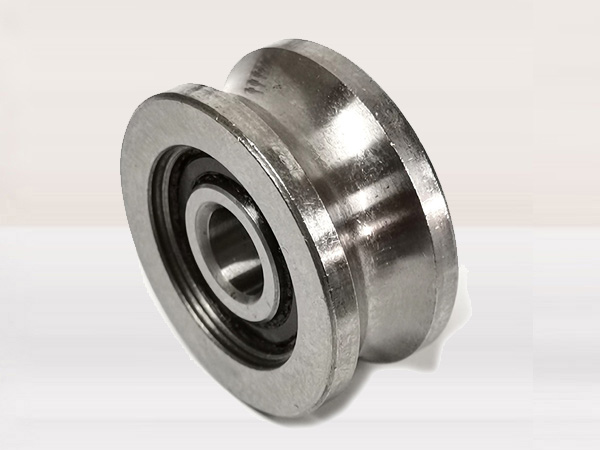These properties allow the bearing to rotate at high speeds without the likelihood of failure. The steel is treated with a number of different processes to include; heat treatment, heating the steel to 1500 degrees F and then quenching it in oil. This process leads to a Rockwell rating of 60-64. This steel material does also have some limitations, it is heavy and isn’t resistant to chemicals or corrosion, exposure to liquids of a PH below 7 on the acidic scale will corrode the material.
Steel Ball Bearings
This dictates with a relative level or common sense that steel bearings aren’t the best choice for food preparation where moisture and temperature fluctuation combined with acid ingredients could lead to significant wear or failure.
Consideration should always be given to the environment within which the bearing is going to operate and this, whilst also considering your goals will drive the decision behind bearing materials.
Ceramic bearings may be good in cycling applications and stainless steel in food preparation applications. Stainless steel bearings are resistant to corrosion and this is due to the metal content ratios. Chromium for example is resistant to a lot of corrosive substances and stainless steel typically will contain a greater percentage of this metal.
440c stainless is steel from the 400 series and is steel mainly used in bearings but is also used in knife blades. Knife blades need to be corrosion resistant and Sharpe, sharpness can only be achieved through hardness if it going to be retained. Bearings also need to be precision pieces and as such need to be hard and resistant to corrosion or failure. Hardness is generally achieved through a process of quenching post heating which leads to a hard-crystalline structure.
Due to the nature of the treatments that the steal goes through and its composition of material types it is great at dealing with high temperature, meaning it can with stand high speeds for long periods of time.
Another example of how it is important to understand the different material types is to consider applications when carbon could be unhelpful. MRI stands for Magnetic resonance imaging, so the existence of carbon in this such application is not advisable and potentially catastrophic. Low carbon steel would be the material of choice in this application, there are as with every material you choose draw back and would likely be less durable especially when high speeds need to be achieved.
Ceramic bearing material
Another bearing material that is often used is Ceramic, and ceramic bearings also have a lot of positives, they are far more resistant to chemicals and Acids. On top of this they are extremely hard and rate even higher on the Rockwell scale meaning they are able to outperform on almost every level the steel variants.
Ceramic bearings are able to withstand heat in excess of 700 degrees. They are a lot lighter and harder and generally need a lot less lubrication if any. Ceramic bearings are very versatile and can be used in the pharmaceutical industry as well as roller blades and cycles.
Ceramic bearings have lower thermal expansion and a smoother surface, these bearings are far more efficient and are much less likely to conduct electricity. Some of the drawbacks of ceramic bearings would include the likelihood of the bearing to crack or fracture. A material can become so hard it becomes brittle due to a lack of flexibility. We can see this in the manufacturing of Damascus chef knives where it is common practice to layer over the brittle and very sharpe steel with softer steel that is more pliable leading to a blade that is very sharpe and durable.
As with every material there are draw backs and most noticeably with ceramic bearings it is a low load capacity. Some ceramic compounds have a greater resilience to heat and load so choosing the correct one is important.
